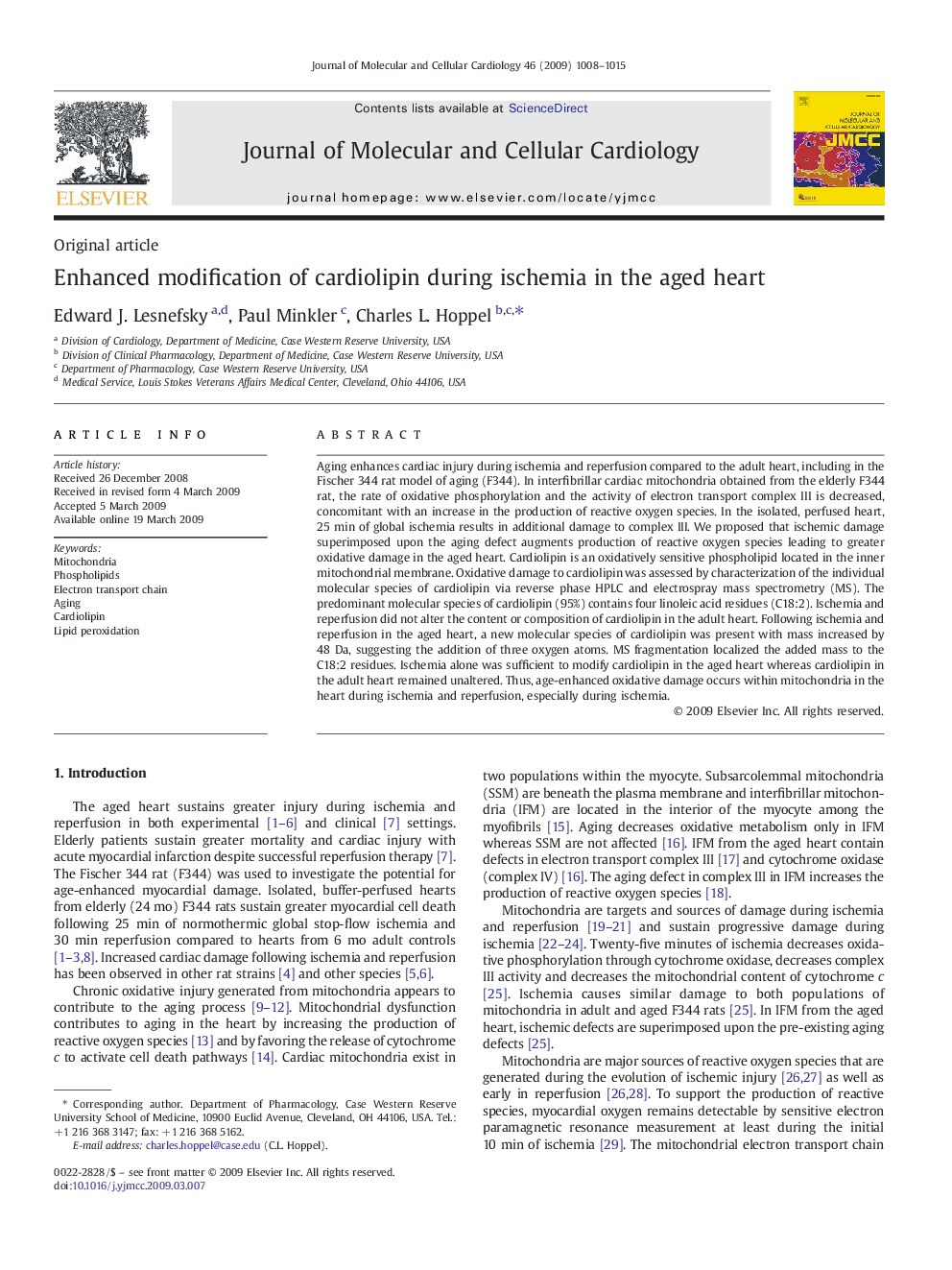| Article ID | Journal | Published Year | Pages | File Type |
|---|---|---|---|---|
| 2191130 | Journal of Molecular and Cellular Cardiology | 2009 | 8 Pages |
Aging enhances cardiac injury during ischemia and reperfusion compared to the adult heart, including in the Fischer 344 rat model of aging (F344). In interfibrillar cardiac mitochondria obtained from the elderly F344 rat, the rate of oxidative phosphorylation and the activity of electron transport complex III is decreased, concomitant with an increase in the production of reactive oxygen species. In the isolated, perfused heart, 25 min of global ischemia results in additional damage to complex III. We proposed that ischemic damage superimposed upon the aging defect augments production of reactive oxygen species leading to greater oxidative damage in the aged heart. Cardiolipin is an oxidatively sensitive phospholipid located in the inner mitochondrial membrane. Oxidative damage to cardiolipin was assessed by characterization of the individual molecular species of cardiolipin via reverse phase HPLC and electrospray mass spectrometry (MS). The predominant molecular species of cardiolipin (95%) contains four linoleic acid residues (C18:2). Ischemia and reperfusion did not alter the content or composition of cardiolipin in the adult heart. Following ischemia and reperfusion in the aged heart, a new molecular species of cardiolipin was present with mass increased by 48 Da, suggesting the addition of three oxygen atoms. MS fragmentation localized the added mass to the C18:2 residues. Ischemia alone was sufficient to modify cardiolipin in the aged heart whereas cardiolipin in the adult heart remained unaltered. Thus, age-enhanced oxidative damage occurs within mitochondria in the heart during ischemia and reperfusion, especially during ischemia.
